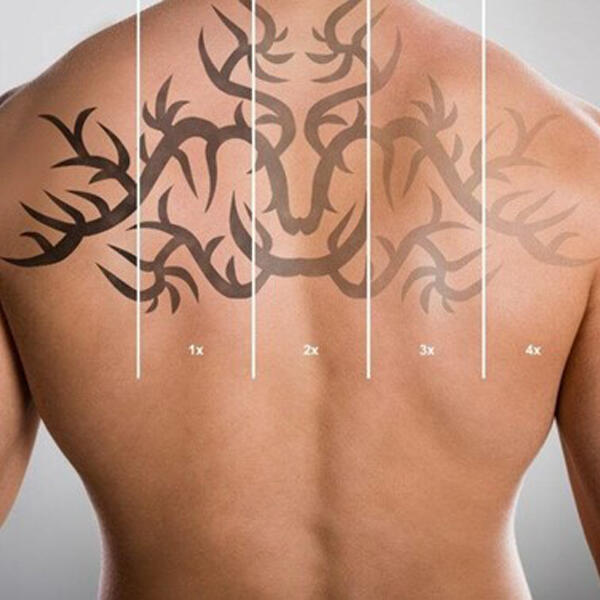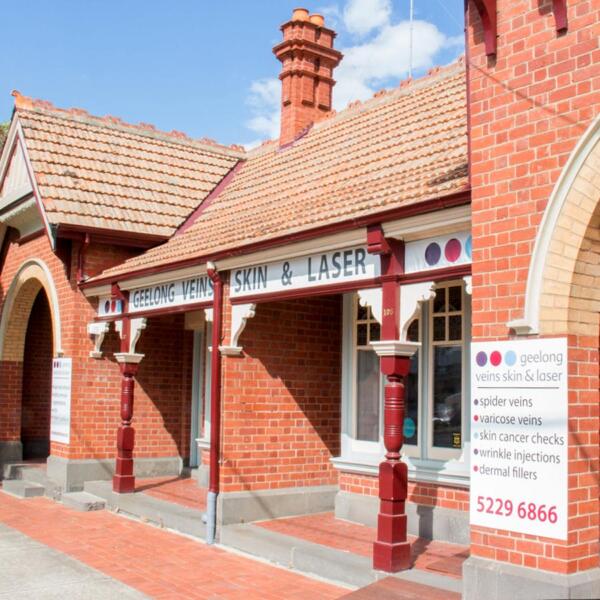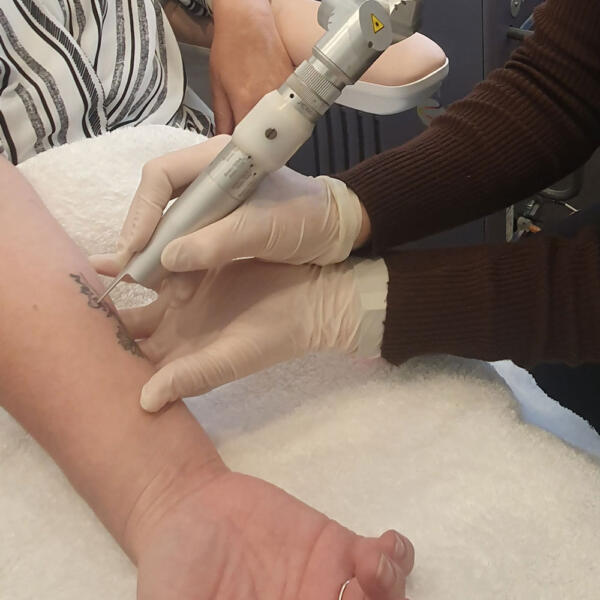Removal of all colours of tattoo
Laser treatments
Safe, effective tattoo removal by trained dermal clinicians
Our dermal clinicians use a Q switched laser with 3 different wavelengths to effectively remove tattoos of all colours. We start with a consultation and test spot.

How does laser remove tattoos?
Tattoo removal laser works by firing a laser beam of a particular wavelength that will be attracted to the colour in your tattoo. The tattoo dye sits in the skin cell in large molecules that the body can’t break down. The laser shatters the ink into much smaller pieces that the body’s immune system is then able to clear.
What colour tattoos can be removed at Geelong Veins Skin & Laser?
We are experts at removing black and grey tattoos and use two different wavelengths to do so.
We can also remove red, yellow, blue, green and other colour shades.
Cosmetic tattoos can also be removed or adjusted, this can cause some initial darkening and involve delicate areas or hair bearing areas so may need advice from our onsite doctors.
Preparing for your appointment
No tanning or fake tan for 2 weeks prior.
Post-treatment guidelines
You will leave your appointment with gel and a dressing on the tattoo site. You will need to redress this and keep it clean and dry for 1 week.
If any rare side effects occur such as excessive pain or infection, our onsite doctors can provide follow on consultation and management.
Laser tattoo removal can be painful but we have methods to reduce the pain if needed including medical strength numbing cream or injection of local anaesthetic by our doctors.
Yes, we are a doctor led clinic, so if you require analgesia we can arrange medical strength numbing cream or injection of local anaesthetic.
Most tattoos require 6-10 treatment sessions. At your first appointment we will give you a quote.
Faint or fine tattoos may only require 3 sessions, or if the indication is to lighten the tattoo for a redo then fewer treatments may be sufficient.
At GVSL all laser tattoo removal treatments are done by our highly trained dermal clinicians who have university degrees in skin science.

The GVSL difference
At Geelong Veins Skin & Laser we provide complete care of you as a patient and your medical concern. You may see one, or several of our team in any consultation. We work together with expertise in general practice, radiology, vein specialties, dermal therapy, skin cancer medicine, vein / skin and cosmetic nursing to provide you with a treatment plan that will lead to safe and effective results.






